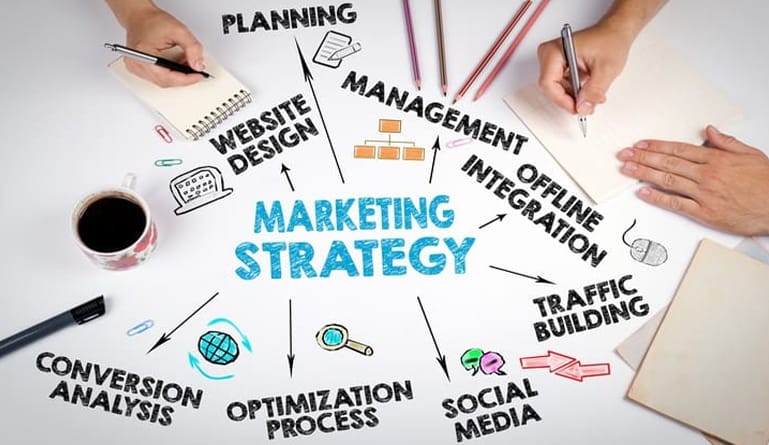
Table of Contents
Key Approaches for Success in the Market – In today’s fast-paced and highly competitive business environment, having a well-defined strategy is essential for sustained growth and success. Business strategy is not just about having a vision; it’s about making deliberate choices that align with market demands, technological advancements, and consumer expectations. Companies that fail to adapt often struggle to stay relevant, while those with innovative strategies continue to thrive.
This article explores the latest trends in business strategy, key frameworks, and how businesses can leverage innovation to gain a competitive edge in the market.
Read Also: How Microchannel Heat Exchangers Contribute to a Greener HVAC Industry
Understanding Business Strategy
What is Business Strategy?
A business strategy is a plan that outlines how a company will achieve its long-term goals and maintain a competitive advantage. It involves decision-making related to market positioning, resource allocation, product development, and customer engagement.
The Importance of Business Strategy
A well-crafted strategy provides several benefits:
- Clear direction: Guides decision-making and operational efficiency.
- Competitive advantage: Differentiates a company from its competitors.
- Scalability: Helps businesses expand in a structured manner.
- Risk mitigation: Reduces uncertainty by planning for potential challenges.
Key Approaches for Success in the Market is Strategy Frameworks
1. Porter’s Five Forces Analysis
Michael Porter’s Five Forces framework helps businesses analyze their industry structure and understand competitive forces:
- Threat of new entrants: Barriers to entry and potential new competitors.
- Bargaining power of suppliers: Influence of suppliers on pricing and supply chains.
- Bargaining power of buyers: Customer influence on product pricing and quality.
- Threat of substitutes: The availability of alternative products or services.
- Industry rivalry: Competition among existing players in the market.
2. SWOT Analysis
A SWOT analysis helps businesses identify internal strengths and weaknesses, as well as external opportunities and threats.
- Strengths: What the company does well (e.g., brand reputation, strong R&D).
- Weaknesses: Areas needing improvement (e.g., lack of resources, high costs).
- Opportunities: External factors that can be leveraged (e.g., market expansion, technological advancements).
- Threats: External risks that could impact the business (e.g., economic downturns, industry disruptions).
3. Blue Ocean Strategy
This strategy focuses on creating an uncontested market space, rather than competing in a saturated industry. It involves:
- Innovating new products or services.
- Targeting unexplored customer segments.
- Differentiating from competitors by adding unique value.
4. Agile Business Strategy
With the rise of digital transformation, businesses are adopting agile strategies to remain adaptable. Key principles include:
- Iterative planning: Continuous updates based on market feedback.
- Customer-centric approach: Prioritizing user experience and satisfaction.
- Flexible operations: Quickly responding to market changes.
The Role of Innovation in Business Strategy
Digital Transformation
Technology plays a critical role in modern business strategy. Companies leveraging digital tools such as AI, big data, and automation gain a significant advantage. Examples include:
- AI-powered analytics for data-driven decision-making.
- Cloud computing for scalability and remote work efficiency.
- E-commerce expansion to reach global customers.
Sustainable Business Strategies
With growing concerns about climate change, sustainability has become a core part of business strategy. Companies are focusing on:
- Eco-friendly products to attract environmentally conscious consumers.
- Sustainable supply chains to reduce carbon footprints.
- Corporate social responsibility (CSR) initiatives to enhance brand reputation.
Challenges in Implementing Business Strategies
Despite the benefits, businesses face challenges when executing their strategies:
Resistance to Change
Employees and stakeholders may resist new strategies, fearing uncertainty. Overcoming this requires effective communication and leadership.
Market Uncertainty
Economic fluctuations, technological disruptions, and global events (e.g., pandemics) can impact strategy execution. Businesses must remain agile and develop contingency plans.
Balancing Short-Term and Long-Term Goals
Focusing too much on immediate gains can jeopardize long-term sustainability. Companies must strike a balance between short-term profits and future growth.
Conclusion
Business strategy is the backbone of any successful organization. In an era of rapid technological advancements and shifting consumer preferences, companies must continuously adapt their strategies to stay competitive. By leveraging strategic frameworks, embracing innovation, and preparing for challenges, businesses can position themselves for long-term success.
Implementing a well-thought-out business strategy requires careful planning, strong leadership, and a willingness to evolve. As industries continue to change, the companies that prioritize strategic agility and innovation will be the ones that lead the market.






